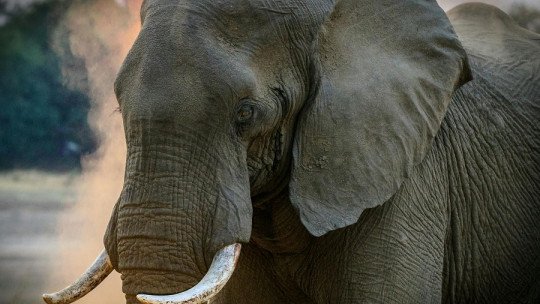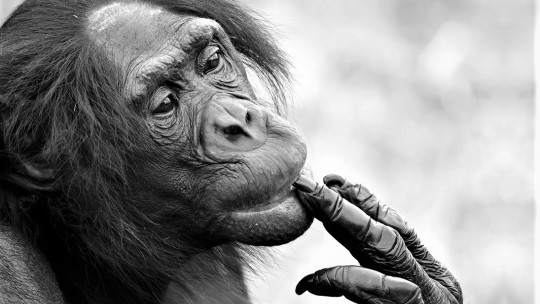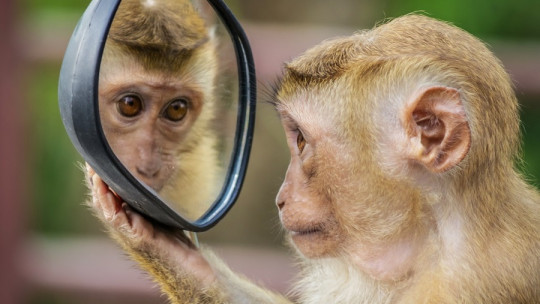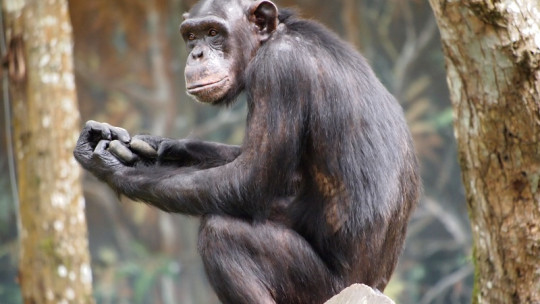
Humans live in an anthropocentric society, in which we generally believe we are superior to other living beings, due to intrinsic characteristics of our species, such as intelligence and the ability to communicate.
However, as ethology advances, the science focused on the behavior of all animal species, the more we can realize that these abilities are not exclusive to humans. Species such as cetaceans, certain birds and primates show intelligent traits and their own forms of culture and customs.
They also stand out Elephants, one of the most intelligent animals on planet Earth. In this article I focus on them, pointing out a very recent discovery and other signs of elephant intelligence.
This is the intelligence of elephants
Pardo et al. They have recently published a scientific article in which they present evidence that African elephants use names to call each other. To carry out this research, 469 vocalizations of females and calves of wild African elephants, inhabitants of nature reserves in Kenya between 1986 and 2022, were analyzed.
In the study, different vocalizations were distinguished to call different elephants, that is, each elephant is called in a specific way. This analysis was performed using a machine learning model (or machine learning), which made this identification from the acoustic structure of each call despite the similarities between them, a capacity that humans do not have naturally.
Thanks to this intelligent system, it was possible to predict which elephant was the recipient of each call. At the same time, the authors compared the differences between the reactions of 17 wild elephants when hearing vocalizations that had been identified as their name and their reactions when hearing a call to another elephant.
This way, Elephants were found to approach loudspeakers faster and respond more often and louder to calls directed at them. Likewise, it was observed that adult elephants use names more than calves, from which it can be intuited that this learning requires maturity.
Study conclusions
It is thought that these symbolic sounds arose due to the social nature of elephants (as occurred with other animal species, including ourselves) and the need to communicate with each other at a distance. That is, they allow you to call each other and allow you to come and respond to the call.
Likewise, an added function of strengthening social bonds between elephants has been hypothesized. However, there is still much to explore in this area, since this research is very novel, it is the first to investigate this aspect and has left more questions than answers.
For example, it is not known all the information contained in vocalizations or whether all elephants in the same family use the same name to refer to the same individual or whether each elephant has more than one name. And do the rest of the elephant populations also use names?
What can be concluded is that These findings may help us understand our own evolution of language and the forms of communication of other species. However, the research is not without criticism. Some think that inferring that these vocalizations are names is a bit hasty or too generous, even though other non-human animals also use sounds as names.
Elephants are not the only non-human animals that do this, but they are the ones that use a more similar form, along with some primates. Some species of parrots and dolphins also refer to each other by a name, but let’s say that this name is given by each individual to themselves.
When they communicate with others of their species, these parrots and dolphins emit a specific sound, as a signature or identifying seal, which serves to announce themselves so that others can identify them. That signature is what serves as their name, which the rest of their species imitate and use to call them.
Elephants, on the other hand, use sounds that are not the product of an individual’s imitation, but are arbitrary. The researchers of this study believe that these sounds are iconic names, which are created to represent the individual symbolically.
Other signs of elephant intelligence
Even though these findings are recent, it was already known that elephants are very intelligent beings with multiple complex cognitive abilities. For example, their legendary memory, even long-term: they can memorize the location of food and water sources, as well as migration routes that they have not traveled for years and are complex.
In the same way, They are capable of using tools, such as branches or other objects to scare away flies, scratching parts of the body that they cannot reach, or reaching for food. These skills demonstrate your ability to understand cause and effect relationships. This is also reflected in other elephant behaviors, such as using mud to protect themselves from the sun.
What’s more, experiments have been carried out directly with elephants in which they show that they know how to manipulate systems to obtain rewards. And speaking of experiments, in one of them it was discovered that elephants are able to recognize themselves in a mirror, showing that they have the capacity for self-awareness and a sense of self.
emotional intelligence
Elephants are not only cognitively intelligent, but also emotionally intelligent. They are able to show emotions, as well as identify, understand and respond to those of other elephants in their family. Therefore, they also have empathic capacity.
Likewise, when an elephant is injured or becomes sick, the rest of its group tries to help it physically or, at the very least, stays by its side for support. These behaviors, in addition to helping to promote social cohesion, favor the survival of the family.
Among their complex emotions and behaviors, grief has been observed. When an individual dies, the rest of the elephants show recognition of the situation and pain, through behaviors such as gently caressing the deceased with their trunks, staying next to them for a long time and making soft sounds, like wails.
Sometimes they even move it to a specific point and cover it with dirt or foliage, a place where they continue to mourn. This can give the image that they are burying him, as if they had a burial ritual.
Social structure and culture
As you may have seen, elephants are very social beings, since they live in families, like humans. Specifically, they have a matriarchal social hierarchy, in which the oldest females are the most respected, with the oldest of all being the matriarch.
The matriarchs are responsible for making decisions regarding the survival of the group. For example, they are the ones who direct the herd in its migrations, and in the search for water and food when there is a shortage.
In addition, Females are responsible for transmitting knowledge, skills, resources and survival strategies from generation to generation, so that they transmit culture through social learning. In the process, they also tend to show patience when taking care of the young and teaching them.
These little ones are dedicated to playing with each other and with adults, imitating them, which allows them to learn to survive while having a good time. The breadth of social behaviors also encompasses those already mentioned, such as caring for each other, grieving, and communication. The more you know about them, the clearer it is how intelligent they are.








